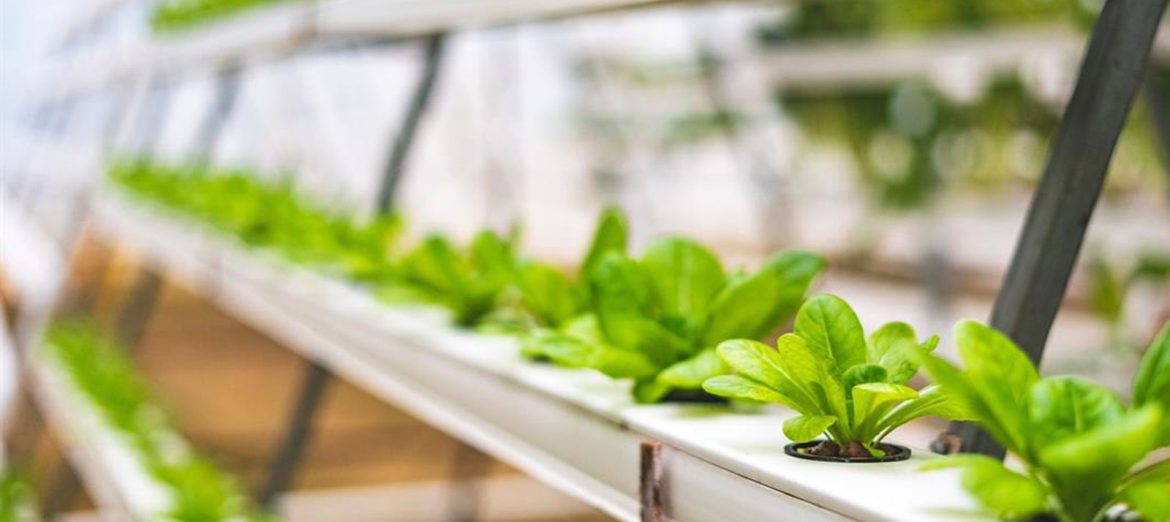
Automated Hydroponic Systems: The Future of Agricultural Technology
Embrace the efficiency and sustainability of Automated Hydroponic Systems. Utilize advanced technology to optimize the use of natural resources.

Embrace the efficiency and sustainability of Automated Hydroponic Systems. Utilize advanced technology to optimize the use of natural resources.
The agricultural sector faces challenges such as a growing population and limited resources, triggering the search for new and innovative solutions. One such solution is automated hydroponic systems. Hydroponic farming is a method of plant cultivation in a water-based environment, replacing traditional soil usage. These automated systems optimize the plant growth process, resulting in increased efficiency, sustainability, and resource conservation. In this article, we will explore what automated hydroponic systems are, their advantages, and their future potential.
Compared to traditional farming methods, both hydroponic systems and automated hydroponic systems offer various advantages. With the use of these systems, significant increases in agricultural production and resource savings can be achieved.
Firstly, it is well-known that hydroponic systems provide increased production compared to traditional farming. In these systems, plants have the potential for growth independent of limiting factors such as soil quality or seasonal variations since they are grown in a nutrient solution. Research has shown that hydroponic systems can result in production increases of up to 700% compared to traditional farming methods.
Furthermore, automated hydroponic systems are known for their energy efficiency. Automation technology enhances energy efficiency by precisely controlling processes such as lighting, irrigation, and nutrient delivery. For example, LED lighting systems consume less energy compared to traditional lighting sources while providing the required light for plant growth. This can result in energy savings of up to 80%.
In addition, hydroponic systems are recognized for their water conservation benefits. As plants are rooted in a medium instead of soil, there is no need for water in traditional terms. Nutrient solutions are directly applied to the roots of plants, leading to water savings. In traditional farming, a significant portion of irrigation water is retained in the soil and lost through evaporation, whereas water usage in hydroponic systems is more efficient. The water-saving potential of hydroponic systems can reach up to 95%.
Section 1: Advantages of Automated Hydroponic Systems
Water and Resource Conservation: Hydroponic systems consume less water compared to traditional soil usage, leading to more efficient utilization of water resources.
Climate Independence: Controlled environment cultivation allows for year-round production regardless of seasons.
Optimizing Plant Growth: Automation technology constantly monitors and optimizes factors such as water, nutrients, and light that plants require.
Reduction in Pesticide and Herbicide Usage: Hydroponic systems require less chemical intervention for pest control.
High Efficiency: Hydroponic systems facilitate easier access to nutrients for plants, promoting faster growth.

Section 2: Functioning of Automated Hydroponic Systems
Water Circulation: Water in the system circulates through pumps to supply plants with nutrients and remove waste materials.
Nutrient Solution: Nutrients required by plants are provided through a nutrient solution, nourishing the roots of plants. The nutrient solution contains all the necessary macro and micronutrients for healthy plant growth and development. In automated hydroponic systems, the process of preparing the nutrient solution is precisely controlled.
Monitoring and Control Systems: Automated hydroponic systems are equipped with various monitoring and control systems to optimize plant growth. Sensors continuously monitor and transmit data on factors such as water, nutrients, and light requirements, allowing for automatic adjustments.
Lighting: LED lights provide the necessary light for photosynthesis in hydroponic systems. Lighting systems have programmable features to adjust the color spectrum and light intensity to optimize plant growth.
Nutrient Solution Preparation: Nutrients required by plants are supplied through pre-prepared nutrient solutions. These solutions are directly provided to the plant roots, fulfilling their nutritional needs.
pH and EC Control: pH level and electrical conductivity (EC) of water are important in hydroponic systems. Automated systems monitor these values continuously and make automatic adjustments when necessary. pH levels affect the plants’ ability to absorb nutrients, while EC determines the total salt content in the nutrient solution.
Humidity and Temperature Control: Maintaining appropriate humidity and temperature conditions is crucial for plant growth within the cultivation chamber. Automated hydroponic systems are equipped with sensors and systems that monitor and control humidity, temperature, and carbon dioxide (CO2) levels. This ensures plants are kept in optimal growth conditions, resulting in the best yield.
Efficiency and High Production: Automated hydroponic systems offer higher efficiency and production compared to traditional soil-based farming. They conserve water, nutrients, and energy, supporting the efficient use of resources. Additionally, ensuring plants are consistently kept under optimal growth conditions enables rapid and healthy growth, leading to high yields.
Conclusion:
Automated hydroponic systems represent an important technology for the future of agriculture. With advantages such as water and resource conservation, climate-independent production, optimized plant growth, and high efficiency, these systems play a significant role in the sustainability and food security of agriculture. The use of automated hydroponic systems increases efficiency in the agricultural sector while reducing environmental impact. It is anticipated that this technology will further develop in the future, expanding the boundaries of agriculture and contributing to a more sustainable future.
